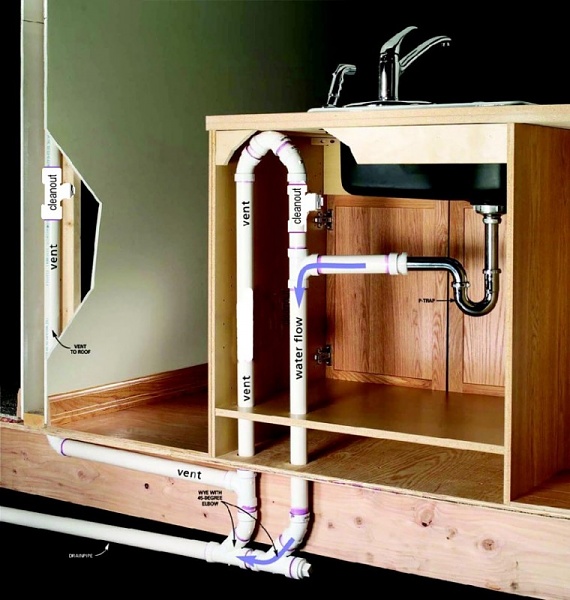Plumbing a Kitchen Island

 One of the great kitchen trends of the past decade is kitchens with large islands. Everyone loves an island—they are practical and aesthetically appealing. It makes kitchen work easier because it frees up workspace on other countertops and gives a place for friends and family to gather when visiting. But islands with a kitchen sink present a special challenge and need to be carefully planned. Unless you’re an amazing home handyman, it’s a project left to the Sacramento plumbing pros.
One of the great kitchen trends of the past decade is kitchens with large islands. Everyone loves an island—they are practical and aesthetically appealing. It makes kitchen work easier because it frees up workspace on other countertops and gives a place for friends and family to gather when visiting. But islands with a kitchen sink present a special challenge and need to be carefully planned. Unless you’re an amazing home handyman, it’s a project left to the Sacramento plumbing pros.
The Challenge
The problem with plumbing a kitchen sink in an island starts with the kitchen geography. The island doesn’t abut a wall. That means that the plumbing must run under the floor, yet the water, drain and vent requirements are the same as for a sink that abuts the wall. This is where it gets tricky. If you’re doing a major remodel and the floor is already open, it’s much easier.
Waterlines, Drains, and Vents
Running cold and hot waterlines are straightforward and require no special considerations other than making certain that the waterlines are long enough and properly aligned to hook up with the faucet connector lines. The problem begins with the vent and drain system. The drain configuration will require modification, and this is where problems arise.
Traps in sinks are designed to hold a bit of water to stop sewage gases from entering the sink. Sinks on the kitchen perimeter with wall access typically require a P-trap that connects to the drain in the sink. With an island, this P-trap will stick out horizontally, requiring another curved drainpipe or P-trap that would lead back into the floor. What’s created is an S-trap arrangement that is usually not code-compliant. The solution is a loop vent and drain.
This is designed to create proper venting and prevent water locks. Island sinks will typically use loop venting. This is done by attaching a T-fitting to the horizontal P-trap drain to direct the water flow down and toward the floor. The top of the T is connected to an inverted U-designed vent pipe. The top must run upwards to the bottom of the counter and then loop down again and through the floor. Then both pipes will connect to the primary drain. The vent pipe, though, will need to hook up with another pipe that connects to the main vent pipe of the house.
Sometimes, due to space limitations, the loop design doesn’t work. Then an air admittance valve will need to be installed. This eliminates the necessity to hook up the main vent system to the vent pipe of the island.
When all is complete, plumbing a kitchen island is worth the trouble and expense. Form and function at it’s finest. Call our experienced plumbing team today as you get ready for your kitchen remodel.



